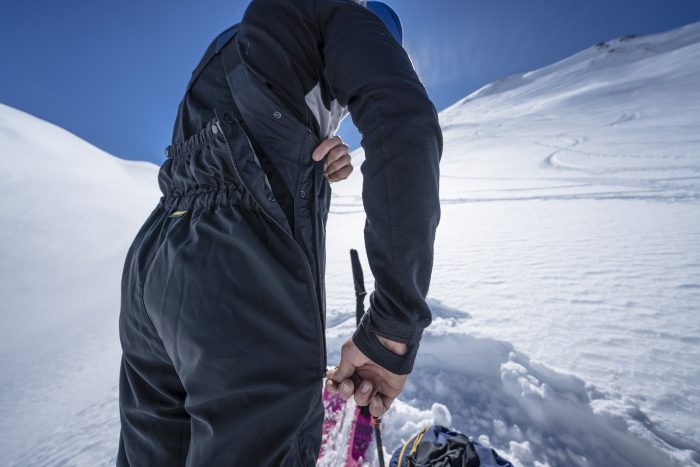Give your ski gear an end of season MOT

As the European ski season comes to a close, we want to highlight the importance of looking after your gear before safely packing it away until next winter. So follow these steps to ensure your gear goes away safely, ready to serve you well again the next time.
Step 1: Clean your outerwear
Your ski jacket and salopettes pick up more dirt than you think. From hard-earned sweat to those après-ski spillages, if left they can quickly degrade the waterproofing properties. First wash in the washing machine with Tech Wash®, making sure to follow the instructions on the care label.
If your gear had been wetting out before the clean, Tech Wash itself can revitalise the durable water repellency (DWR) but if it is still wetting out, it is time to re-waterproof! TX.Direct® can be applied directly in the washing machine in a separate cycle. Alternatively if your gear has a wicking lining, we recommend using the spray-on TX.Direct. Nikwax does not need heat to activate it so you can just hang you gear to air dry after cleaning and proofing, you can of course tumble dry if the care label allows.

For down-filled items, use Down Wash Direct® in the washing machine to clean and follow with Down Proof to add DWR. We recommend tumble drying down items to fluff them back up, this can be a bit of a process as you will need to tease the down clumps apart at intervals in the drying process but it’s worth it. It is vitally important to make sure all gear is completely dry before packing away.
Step 2: Clean your gloves and socks
Like your outwear, your gloves will pick up a lot of dirt on the slopes. Clean gloves will ensure that they stay breathable and waterproof, stopping water lingering on the inside of your gloves and making your hands feel cold. It takes a long time for extremities to warm back up again once they are cold, so it is important to keep them warm. After cleaning, you can apply Glove Proof to synthetic or leather and synthetic combination gloves. For full leather gloves, use Waterproofing Wax for Leather.

In the same way that hands can quickly get cold if they are damp, the same goes for feet. A lot of snow sports enthusiasts use Merino wool socks for their temperature regulating and wicking properties. These types of socks need different care to synthetic ones. Make sure to clean according to the care label and use Wool Wash, our speciality cleaner and conditioner designed to deodorise and enhance the wicking and drying performance of woollen items. For synthetic socks, look to BaseWash and BaseFresh® to gently clean, condition and deodorise leaving them fresh and ready for the next winter.
Step 3: Clean your base layers
Sweat, oils from your skin and dirt will build up on your base layers after working hard in them on the slopes. This can cause the technical wicking to become less effective, making temperature regulation more difficult. Regular detergents can build up on clothing and have the same effect, so it is important to use a speciality cleaner to ensure your gear is performing at its best. BaseWash will gently clean and deodorise synthetic base layers, whilst Wool Wash will do the same for your woollen pieces. BaseFresh is the only fabric conditioner designed to deodorise and enhance the wicking and drying properties, rather than regular conditioners which can attract water to give the soft feel. Using these types of cleaners and conditioners will ensure you are dryer, warmer and more comfortable whilst smelling fresh too!

Step 4: look after your equipment
If you are lucky enough to own your own boots and ski’s or snowboard, it is a good idea to service them at the end of the season so they are set and ready before being packed away. Clean the inners of your snowboard or ski boots with Sandal & Sports Shoe Wash to remove any unwanted odours and to improve their wicking quality. As with your socks, wet feet very quickly come cold feet!
Servicing your skis and board can include a re-wax and edge sharpen, but if ski touring is your thing you can waterproof your ski skins with Ski Skin Proof. This treatment is designed to prevent ice build-up on the fibres and to reduce saturation on all ski skins to improve glide and reduce kick.

Following these steps will safeguard the technical qualities of your snow sports gear for future use, enhancing their properties and extending the life of the garments. The longer you can use the gear for, the less you will have to purchase and the more sustainable your use would be. Our last tip and perhaps the most important – make sure all your gear is thoroughly dry before packing away until next season!


Leave a Reply